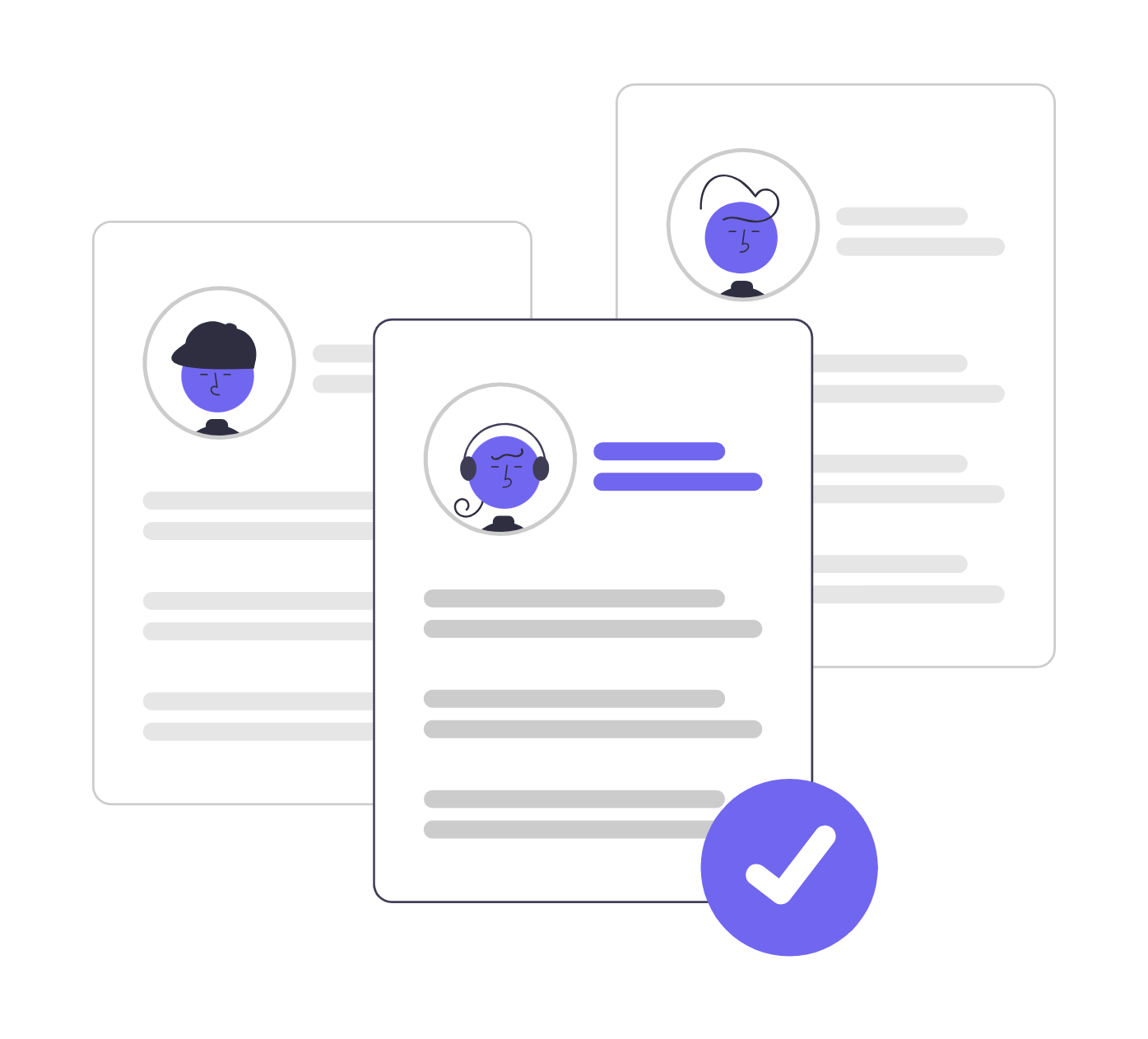Share
Hiring interns isn’t just a way to get extra hands on deck—it’s one of the smartest long-term hiring strategies a business can implement. A well-structured internship program does more than cover a staffing gap. It helps shape future employees, foster innovation, and build a strong employer brand that attracts top-tier talent before they ever hit the job market full-time. But here’s the challenge: most businesses either don’t know where to find great interns or underestimate what it takes to make the experience worthwhile—for both sides. This guide covers exactly where to find interns, how to evaluate them, and what to do once they’re on board to create a high-impact internship program that fuels sustainable growth.
Why Hiring Interns Should Be a Strategic Move—Not a Shortcut
Interns are not just short-term helpers. They’re potential long-term hires who bring fresh ideas, academic knowledge, and untapped enthusiasm to your team. In fact, according to the National Association of Colleges and Employers (NACE), 56% of interns receive full-time job offers, and 80% of those offers are accepted. For startups and small businesses, internships can:
● Help close skill gaps in lean teams
● Offer cost-effective support during peak periods
● Infuse creativity and new perspectives into daily operations
● Reduce future hiring costs by building a talent pipeline
When managed intentionally, interns become high-performing team members who are already aligned with your mission before day one of full-time work.
Before You Hire: Ask Yourself—Is Your Business Ready for an Intern?
Not every company is ready to take on interns. Hiring an intern without the right structure in place can do more harm than good—for both the intern and your team. Here’s how to know you’re ready:
● You have a small, stable core team that can provide mentorship.
● You can offer real projects with measurable outcomes—not just busywork.
● You’re clear on what the intern will gain and what your business will gain.
● You’re willing to commit time for onboarding, training, and feedback.
If you’re hiring an intern simply to offload tasks without guidance, it’s best to wait until you have the capacity to support their growth.
The Best Places to Find High-Quality Interns (And Why They Work)
1. University Career Centers
These are a goldmine for motivated, pre-screened candidates. Most universities have dedicated internship coordinators who match students with companies. It’s often free to post, and schools may even offer credit to students.
2. Professors and Department Heads
Reach out directly to faculty in relevant departments. They know which students are engaged, reliable, and passionate—and often recommend those who are ready for real-world experience.
3. Internship Job Boards
Post on platforms like:
● Internships.com
● Chegg Internships
● Handshake
● LinkedIn and Indeed (use “internship” in your job title/keywords)
These sites attract candidates actively seeking internship roles, improving your match quality.
4. Student Clubs and Events
Want a low-cost, high-impact tip? Attend student club meetings or sponsor a pizza lunch in exchange for five minutes to pitch your opportunity. Many clubs will host you just for the food and exposure.
5. Social Media and Referral Networks
Share the internship role on your company’s social channels. Encourage your team to share it as well. Employees, friends, and even former interns often know students looking for
experience.
6. Alumni Networks
Tap into your own college alumni job boards or contact their career office. Many recent grads seek internships as stepping stones while transitioning careers or industries.
Paid vs. Unpaid Internships: What You Need to Know
Legally and ethically, the difference between a paid and unpaid internship is more than just money. Unpaid internships must follow strict guidelines, especially in the U.S.:
● The experience must be educational in nature.
● Interns must not replace regular employees.
● There must be no expectation of compensation or future employment.
In contrast, paid internships:
● Are treated like part-time jobs (and often follow minimum wage laws).
● Attract more serious and qualified applicants.
● Increase engagement and productivity from day one.
● Reflect positively on your company culture.
Easily administer one-click skill tests with workscreen. -This way you can Assess candidates based on real-world ability—not just credentials like résumés and past experience. This helps you hire more confidently and holistically.

How to Structure an Internship Program That Actually Works
A strong internship program has structure. Here’s how to build one:
● Set Clear Objectives
Define what your intern will learn and what your business will gain. Align the internship with real company goals and growth areas.
● Outline Roles and Projects
Give your intern ownership of something meaningful. Whether it’s a research project, marketing campaign, or operational improvement, avoid assigning only admin tasks.
● Mentorship and Check-Ins
Assign a mentor or supervisor who can answer questions, provide feedback, and track progress. Schedule weekly check-ins to keep things on track.
● Training and Onboarding
Treat the intern like a new hire. Give them the context, tools, and knowledge they need to succeed.
● Performance Evaluation
Have a formal or informal way to review their contributions, offer feedback, and identify growth opportunities.
● Plan for What’s Next
If they perform well, be clear about next steps—whether it’s a full-time role, a future opportunity, or a reference letter.
Quickly identify your most promising candidates. WorkScreen automatically evaluates, scores, and ranks applicants on a performance-based leaderboard—so you can hire faster and more accurately. ��

How to Evaluate Intern Candidates Without a Resume Stack
Because interns rarely have robust work histories, you need to assess them differently:
● Focus on Soft Skills Look for curiosity, communication skills, and enthusiasm. These qualities often predict how coachable and engaged an intern will be.
● Use Mini-Assignments or Scenarios Give a short task or scenario relevant to the internship to assess how they think and solve problems.
● Ask Professors for References Academic advisors often know who takes initiative and who phones it in.
● Conduct Short, Focused Interviews Behavioral questions and motivation-based questions (“Why this role? What do you hope to learn?”) reveal more than GPA ever will.
Eliminate low-effort applicants—including those who use AI Tools to apply, copy-paste answers, or rely on "one-click apply." This way, you focus only on genuine, committed, and high-quality candidates—helping you avoid costly hiring mistakes.

Interns Are Not Free Labor—They’re Investments. Treat Them That Way
The interns you bring in now may be your future team leads, managers, or company ambassadors. Even if they’re with you for just a few months, the impression you leave matters.
Here’s how to make it worthwhile for them:
● Assign real projects, not just errands or note-taking.
● Invite them to team meetings or brainstorming sessions.
● Offer career guidance, LinkedIn referrals, and learning paths.
● Introduce them to your network when they finish.
Common Mistakes That Ruin Internship Programs (and How to Avoid Them)
● No structure or clarity → Interns feel lost or disengaged.
● Too many random tasks → Burnout and poor results.
● No feedback or mentorship → Wasted opportunity for growth.
● Unrealistic expectations → Frustration on both sides.
Instead, set the intern up for success with clear expectations, consistent support, and meaningful involvement in the business. That’s the kind of internship people talk about—and want to return to.
Conclusion: Intern Hiring Is a Long-Term Play—Do It Right
Hiring interns isn’t just a seasonal tactic. It’s a long-term strategy to build a stronger, smarter, more future-ready business. When you know where to find the right candidates—and how to support them once they’re in—you not only fill immediate gaps, you seed your organization with talent that can grow with you. Interns are not a shortcut. They’re an investment. Done well, they return that investment many times over.
FAQ
A: Yes, wherever possible. Paid internships attract more serious applicants, improve work quality, and reflect well on your brand. Even a small stipend shows respect for the intern’s time and effort.
A: Structure. Interns need a clear role, learning goals, mentorship, and regular feedback. Without these, the experience won’t be valuable—for them or for you.
A: Most internships range from 3 to 6 months. However, shorter engagements (even one day a week over a semester) can still be valuable if structured well.
A: Absolutely. Internships are one of the most effective pipelines for hiring. Interns who perform well and align with your culture are already ahead when full-time roles open up.
A: Set clear goals. Give them a real project. Pair them with a mentor. Make the experience meaningful—and structured.

